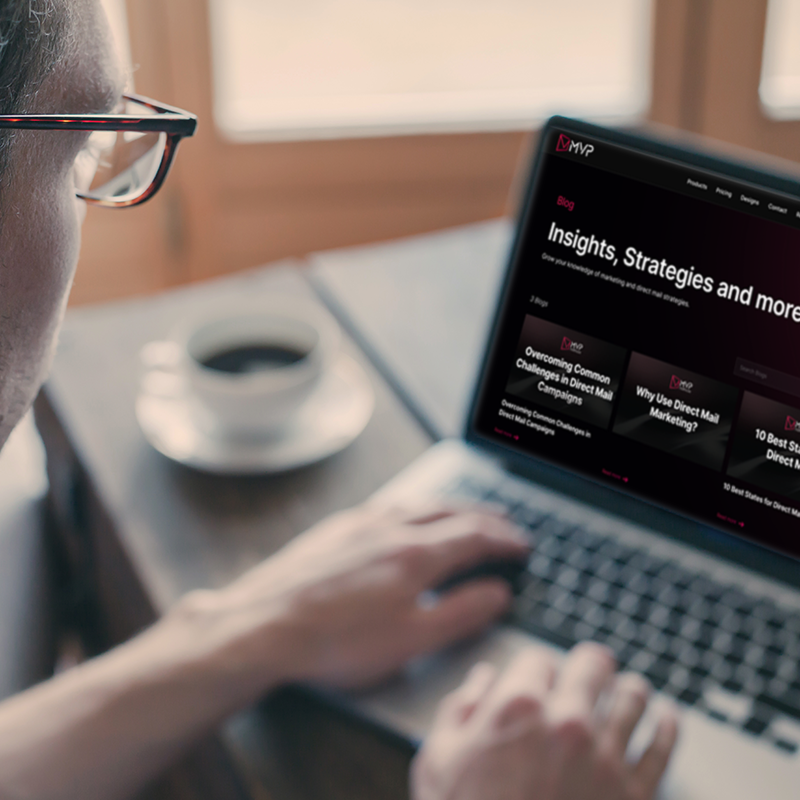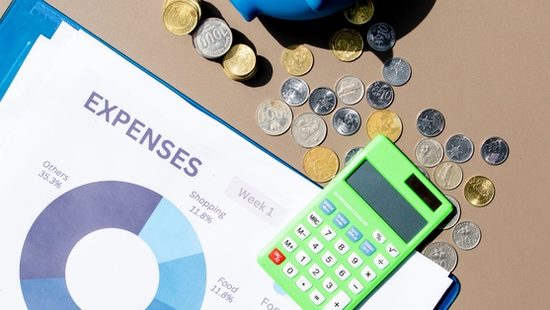What Is Call Scoring and Why It Matters Today
What is call scoring and why it matters today. Improve call performance, boost conversions, and strengthen customer trust. See how it works and get started now.

If you’ve ever asked yourself, “What is call scoring?” you’re not alone. With businesses receiving more inbound calls than ever especially from channels like direct mail marketing, the ability to evaluate call performance has become essential. In fact, studies show that 65% of customers still prefer calling a business over filling out online forms, making phone interactions a critical point of conversion.
This article breaks down exactly how call scoring works, why it matters, and how industries like home services, retail, and healthcare use it to improve customer experience and growth. Whether you're trying to increase conversions, train your staff, or measure ROI from marketing, this guide will give you a clear, practical understanding of how call scoring drives better business outcomes.
What Is Call Scoring?
Call scoring is the process of evaluating and grading phone calls based on specific criteria such as professionalism, clarity, lead qualification, and how effectively the agent guided the caller. Unlike basic call monitoring, call scoring provides a measurable score that reflects the quality of the interaction.
If you’re wondering “What do you mean by scoring?”, it simply refers to assigning a numerical or percentage value to how well the call met expectations. This transforms a subjective judgment into a clear set of performance metrics.
A well-designed call scoring system helps businesses:
- Understand how effectively employees handle customer inquiries
- Identify missed opportunities
- Improve training and coaching
- Track marketing performance, especially for inbound calls
Industries with high call volume like dental, HVAC, financial services, and real estate, use call scoring to turn more calls into booked appointments or sales. Services such as CallPro offer automated scoring that evaluates calls at scale and reveals trends in performance.
How Call Scoring Works
Call scoring may sound complex, but the framework is straightforward: listen, evaluate, score, and improve. Businesses typically create a scorecard customized to their industry, outlining key behaviors or checkpoints expected during a call. The agent’s performance is then rated based on how effectively they met each criterion.
According to industry benchmarks, 70% of call-center interactions are resolved on the first call, underscoring the importance of evaluating call handling and quality.
1. Setting the Scoring Criteria
Common scoring elements include:
- Greeting and first impression
- Tone, empathy, and professionalism
- Ability to identify customer needs
- Asking the right questions
- Script adherence
- Providing clear solutions or next steps
- Invitation to schedule or purchase
Each item is weighted based on its importance. For example, a booking-based business may give “offering an appointment” more weight than “closing the call politely.”
2. Manual vs. Automated Call Scoring
There are two primary methods:
Manual Scoring
A human listens to recorded calls and evaluates performance. This method offers context-rich insights but is time-consuming.
Automated Scoring
Software analyzes call recordings using keyword detection, voice analytics, and behavioral patterns. Automation is ideal for high-volume businesses and removes scoring bias.
3. Turning Scores Into Actionable Insights
What makes call scoring powerful is not the score itself, it’s what you do with the data. Patterns reveal training gaps, missed conversion opportunities, or even marketing channels producing poor-quality leads. For example, if callers from a specific campaign consistently ask the same unanswered question, marketers know the messaging needs improvement.
If your business relies heavily on inbound calls from physical mailers, this becomes even more important. For more insight on how inbound call data integrates with offline advertising, explore how call tracking works in direct mail.
Call Scoring vs Lead Scoring
Although both call scoring and lead scoring help businesses evaluate performance and conversion potential, they measure very different things. Understanding the difference ensures teams don’t confuse call quality with lead quality, two metrics that must work together to increase revenue.
Call Scoring
Call scoring evaluates how well your team handled the call, focusing on behaviors like greeting, listening, qualifying, overcoming objections, and offering next steps. The goal is to measure the effectiveness of the interaction itself.
Lead Scoring
Lead scoring evaluates the likelihood that the caller will become a customer, based on factors such as demographics, intent, urgency, and buying signals.
Lead scoring is often used in digital marketing and CRM workflows, while call scoring focuses on agent performance. When combined, they reveal both:
- How strong the lead was, and
- How well your team handled it
This insight helps businesses identify whether low conversions are caused by poor-quality leads, untrained staff, or both. For more insight on evaluating inbound calls overall, explore this guide on what call tracking is.
Why Call Scoring Is Crucial for Direct Mail Campaigns
Direct mail continues to generate some of the highest response rates of any marketing channel, with average household response rates reaching 4.4%, compared to less than 1% for most digital ads. Because direct mail often drives phone calls, call scoring becomes essential for measuring campaign success.
When someone responds to a postcard, letter, or flyer, they’re already interested. What happens next “the call” determines whether that interest converts into revenue. This is what makes call scoring for direct mail so valuable.
1. Reveals Which Mailers Drive High-Quality Calls
Not every campaign attracts the same type of respondent. Call scoring highlights:
- Which mailers generate motivated buyers
- Which offers create confusion
- Which calls consistently result in booked appointments or sales
This helps businesses avoid wasting money on designs, messages, or targeting methods that don’t convert.
2. Improves Future Campaign Performance
By comparing call scores across campaigns, marketers can refine headlines, offers, call-to-action phrasing, and mailing lists. Over time, this leads to predictable improvements in ROI.
3. Identifies Front-Desk or Sales Weaknesses
If a campaign delivers high-intent callers but the staff mishandles them, call scoring exposes the gap. This prevents businesses from blaming the marketing when the real issue is call handling.
To deepen your understanding of the relationship between tracking and performance, explore the key benefits of call tracking in your business.
How Call Scoring Helps Dental Practices Increase Conversions
While call scoring benefits many industries, dental practices experience a particularly strong impact. Research shows that one missed or mishandled dental call can cost a practice $1,000+ in potential lifetime value. This makes front-desk performance one of the highest-leverage areas for practice growth.
Call scoring helps dental practices by supplying clear, measurable insights into how effectively staff handle new and returning patient calls. With competitive markets and patients seeking fast answers, the initial phone call often determines whether someone books or chooses another provider.
1. Strengthens New Patient Acquisition
Most dental calls come from people ready to book or needing immediate help. Call scoring identifies whether the team is:
- Asking the right questions
- Gathering insurance details
- Offering appointment times
- Creating a trustworthy, friendly first impression
These steps directly impact conversion rates.
2. Improves Consistency Across the Team
Dental offices often experience variation between staff members. Some excel at converting callers, while others struggle. Call scoring levels the playing field by establishing a clear standard for every team member to follow.
3. Reveals Training Opportunities
By tracking patterns like failing to invite callers to schedule or not collecting insurance information, practice managers can deliver targeted coaching that drives measurable improvement.
If your goal is to understand how call performance fits within the bigger dental marketing ecosystem, this foundational guide on what dental marketing is provides helpful context.
Benefits of Call Scoring
Call scoring creates a powerful feedback loop between customer experience, team performance, and marketing effectiveness. When businesses consistently evaluate their calls, they uncover insights that improve every step of the customer journey.
Some of the most significant benefits include:
- Improved Conversion Rates: Better call handling means more callers turn into booked appointments or paying customers. Even a small improvement in call handling can create large gains in revenue especially for high-value industries like healthcare, home services, and professional services.
- Enhanced Customer Experience: Call scoring encourages staff to communicate clearly, respond confidently, and guide callers effectively. Customers notice when their needs are understood and respected, which strengthens trust and long-term loyalty.
- Stronger Team Training: Scored calls reveal performance gaps that might otherwise go unnoticed. Over time, consistent feedback leads to stronger, more confident employees.
- Better Marketing Attribution: If a marketing campaign drives calls but not conversions, call scoring helps determine whether the issue is the quality of leads or the quality of call handling. This clarity prevents businesses from misjudging campaign performance and helps direct budget toward what’s truly working.
- Accountability Across the Team: With a measurable scoring system, expectations become clear. Every team member knows what a high-quality call looks like and what standard they are expected to maintain.
Tips for Creating a Simple Call Scorecard
A practical call scorecard doesn’t need to be complicated. In fact, simpler frameworks produce better adoption and more consistent scoring. When building your scorecard, focus on the elements that most directly influence conversions and customer satisfaction.
Here’s a straightforward approach:
1. Start With 5–8 Core Criteria
These might include:
- Warm and professional greeting
- Understanding the caller’s needs
- Asking qualifying questions
- Providing helpful solutions
- Inviting the caller to schedule or purchase
- Ending the call politely
Each item should contribute meaningfully to the call’s quality.
2. Assign Weights Based on Importance
For example, “offering a next step” may carry more weight than “using the caller’s name,” because it directly impacts conversion.
3. Keep Scoring Consistent
Use a standardized rubric such as a yes/no checklist or a 1–5 rating scale—to reduce subjectivity.
4. Review Calls Regularly
Scoring only works when applied consistently. Weekly or biweekly reviews allow you to catch patterns early and drive steady improvement across your team.
If you’re new to the process or want to see how call performance affects your campaigns, this guide on what direct mail marketing is provides great insight into how inbound calls fit into a broader marketing strategy.
Common Mistakes Businesses Make With Call Scoring
While call scoring is a powerful tool, many companies fail to get the full value because they overlook key fundamentals. Here are the most common pitfalls:
- Overcomplicating the Scorecard: Too many criteria overwhelm staff and dilute the focus. A cleaner, simpler scorecard produces clearer, more actionable insights.
- Scoring Without Coaching: Evaluating calls without offering feedback keeps teams stuck at the same performance level. Pair scoring with active coaching sessions for the greatest impact.
- Only Scoring Bad Calls: Many businesses only review issues. Scoring good calls is equally important, those examples set the standard for excellence.
- Ignoring Data Trends: If multiple callers express the same concerns or if staff consistently misses the same step, that’s a signal. Successful organizations use scoring data to refine scripts, messaging, and internal processes.
- Relying Solely on Automation: Automated tools are powerful, but they can't detect tone, empathy, or nuance with perfect accuracy. A hybrid approach, automated scoring plus periodic manual review, creates the most reliable results.
Conclusion
Call scoring has become one of the most valuable tools for businesses that rely on phone calls to generate leads, book appointments, or close sales. It gives organizations a measurable way to evaluate performance, improve customer experience, and maximize the results of their marketing investments. When done consistently, call scoring leads to stronger teams, higher conversions, and clearer visibility into which campaigns are truly working.
Whether you’re a growing business, a multi-location practice, or a service provider looking to scale, integrating call scoring into your operations can significantly improve how you attract and convert customers.
If you want a simple, powerful way to score calls, improve staff performance, and increase conversions, explore our call tracking and optimization solution, CallPro, or schedule a demo today by visiting our website.
Tags
Frequently Asked Questions
Related blog



